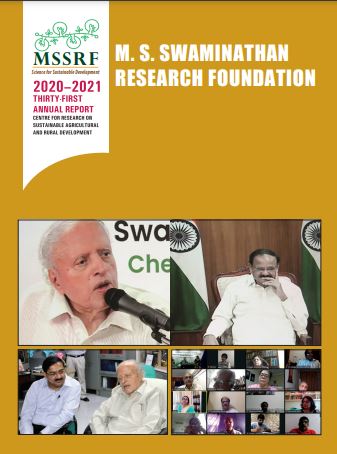From doing things manually to now using advanced technology, MSSRF has been using GIS and RS to capture high-resolution satellite images of subject areas, primarily for quantifying, managing and monitoring
With technologies such as Geographic Information System (GIS) and Remote Sensing (RS) accessible, environmental welfare and research can be more precise in assessing the situation. GIS is a computer-based information system that is attached to a geographical reference (latitudes and longitudes), while RS refers to remote-sensed data that is collected without making any physical contact with the subject being scanned. These functions are executed through tools such as satellites, aeroplanes, etc., and the technologies are usually combined together to produce data.
GIS and RS serve as tools that are used to quantify a subject area. “When I’m undertaking a project, I have to first’ plan out the specifics. This means, I will have to use GIS and satellite images to prepare a map of the scanned area. Once the planning and mapping is done, GIS is used for monitoring and evaluation,” explained Nagarajan R, Head -GIS & Remote Sensing, MSSRF.
MSSRF collects GIS and RS data using high-level satellite images (40cm to 5m), working with less than one metre per pixel high-resolution images, unlike coarse resolution satellite images that contain 30 to 50 metres per pixel. This helps in mapping from form-to-form. In addition, MSSRF works with several institutions undertaking projects at the village and farm level in partnership with ISRO, Ministry of Rural Development, Ministry of Agriculture and Farmer’s Welfare, etc.
“Since 1994, MSSRF has been using GIS and RS technologies — we call this a ‘science-based evidence tool’– but earlier we had all our evidence only in excel sheets. Now, we present the information as a map, which is the base on which we draw conclusions,” Nagarajan stated, adding, “For example, if we have population data, excel sheet numbers are restrictive, but GIS helps in understanding where there is high and low population.”
Before technologies such as GIS and RS were available, study areas were quantified and monitored manually (physically). Without concrete data and a map to prove estimations, it was challenging to produce good evidence. Now with GIS and RS, accurate and precise data is produced and it is impossible to manipulate or tamper with it.
Read more about MSSRF research using GIS and RS technologies here:
http://59.160.153.188/library/biblio?f[author]=750
http://59.160.153.188/library/biblio?f[author]=1016
http://59.160.153.188/library/biblio?f[author]=927
http://59.160.153.188/library/biblio?f[author]=1453
http://59.160.153.188/library/biblio?f[author]=1567
http://59.160.153.188/library/node/124
http://59.160.153.188/library/node/313
*With inputs from Mr. R. Nagarajan, Head-GIS & Remote Sensing, MSSRF Chennai.

